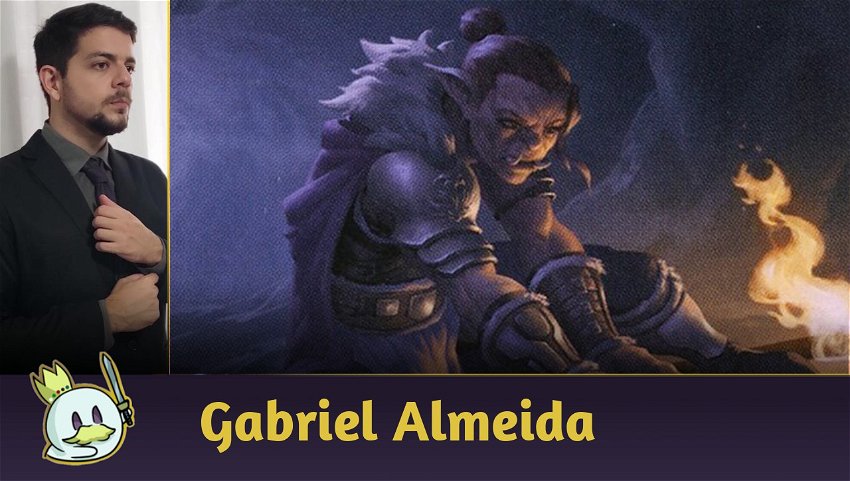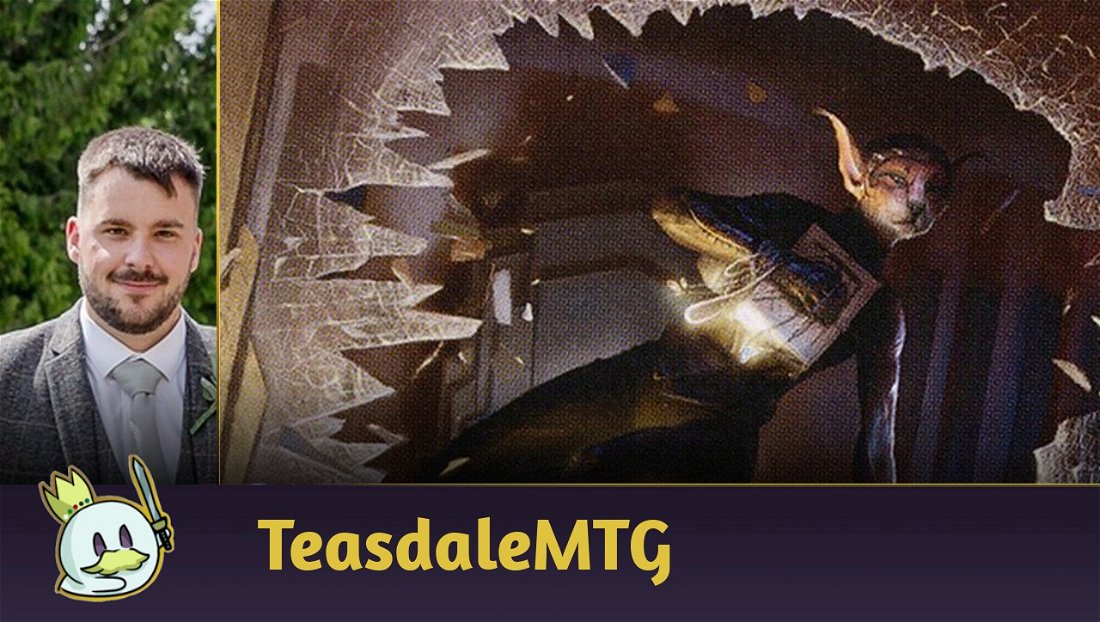What is Take the Initiative?
According to the rulebook, "Initiative" is a designation that the player can have. It is a state that doesn't exist in the game until a card with the effect indicates that one of the players has acquired Initiative.
This designation causes the player to be associated with three triggered abilities.
The first concerns the ability's main effect: “At the beginning of the upkeep, the player who has Initiative ventures into the Undercity”.
Undercity is a dungeon which follows the rules for this keyword. We'll come back to that later.

The second triggered ability related to Initiative reads as follows: "Whenever one or more creatures a player controls deals combat damage to the player who has Initiative, those creatures' controller takes the Initiative." Basically, whoever deals combat damage to the player with Initiative gains the ability. And finally, we have: “Whenever a player takes the Initiative, that player ventures into the Undercity”.
The game's rulebook even clarifies that only one player can have the ability; every time someone takes Initiative, it takes away from the other player.
If any ability causes the player who is already assigned Initiative to get it again, they venture back into the Dungeon, but doesn't get two instances of Initiative.
If any player with Initiative leaves the game, the active player will have it, simultaneously with the player leaving. If you don't have a player, it would be next in turn order.
What is the Undercity?
Undercity, as mentioned before, is a Dungeon.
Dungeon is a card type introduced in Dungeons & Dragons: Adventure in the Forgotten Realms. Dungeons are not traditional cards and don't start in your deck. They are introduced into play through the abilities of other cards and are played in the command zone.
There are currently only four Dungeons: Dungeon of the Mad Mage, Lost Mine of Phandelver, The Initiative Card // Undercity Card and Tomb of Annihilation.
Initially, in the set it came out in, the ability which introduced Dungeons was “venture into the dungeon”. When a card with this ability enters the battlefield, you add one of the Dungeons to the command zone, if you don't already have one. If the effect occurs again, you "advance" in the Dungeon, activating the next effect, sequenced on the card. When reaching the last one, the player completes the Dungeon. And it can start again.
The Initiative allows you to enter the Undercity dungeon only, and the only way to enter the Undercity is through the Initiative.
However, if you already have Undercity in the command zone, the Venture into a Dungeon will allow you to advance. Likewise, if you use a card with Initiative and already have a Dungeon in the command zone other than Undercity, you can advance there.

When to use the Initiative?
Initiative is a mechanic who was introduced in a Commander set, having a design clearly thought about the fun of the game with four or more players. It encourages combat between players, making the game more dynamic.
So, the answer to the question of when to use Initiative cards is simple: when you think you can take advantage of a game with more active combat and players trying to steal each other's Initiative.
Of course, checking what each slot in the Dungeon does is important, to decide if it's worth the mess it usually causes at a multi-player table.
So let's take a look at the options:
The first room is the “Secret Entrance”. Allows you to fetch a basic land from your deck and put it in your hand. Very useful on Commander, especially in white and red colors, as they don't usually have much access to more effective ramps.
Then, when you reach your next upkeep with Initiative or go adventuring, you'll gain the option to enter the "Forge" or "Lost Well" room. The first lets you put 2 +1/+1 counters on a creature, and the second has Scry 2.
Both rooms can be useful on different types of decks and in different situations.
If you previously entered the “Forge”, you can now proceed to the “Trap!” or “Arena”. “Trap!” Causes the target player to lose 5 life and "Arena" makes you Goad target creature. Goad is an ability that forces the creature to attack when possible and prioritizing players other than the controller of the ability.
“Trap!” it's a room that is unlikely to be used in a Commander game, as players start with 40 life. In a game starting with 20 life, it can be helpful, although not as interesting as the one in the "Arena" - unless, of course, it is lethal.
If you entered “Lost Well”, your options are now “Arena” and “Stash”. “Arena” has already been explained, and “Stash” creates a treasure token.
If the player chose the option to enter the "Arena", they will have two rooms to follow: "Archives" and "Catacombs". The first makes the player draw a card, while the second makes a 4/1 creature token with Menace.
If you entered “Trap!” your only option will be “Archive”. If you entered the "Stash", your only option will be to go to "Catacombs".
At the end of the path, you will arrive in the “Throne of the Dead Three” room. The ability that triggers upon arriving in this room is “Reveal the top 10 cards of your deck. Put a creature from among them onto the battlefield with three +1/+1 counters on it. It gains hexproof until the end of your next turn. Then shuffle your deck.”
Looking at the top 10 cards is looking deep into the deck. You will hardly not find a creature worth your while.
That said, these abilities take time to kick in, and unless you have a deck focused on abusing Initiative and venturing into Dungeons, it's possible that the dungeon won't complete.
However, there are several small effects that end up being worthwhile individually, as we have good creatures with Initiative that are independent of completing the Dungeon.

How to get the most out of Initiative
If you like the mechanic and want to take advantage of it as efficiently as possible, probably the best strategy is to mix a littlebit of blink and pillowfort.
If the goal is to activate the dungeon several times, you will have to trigger the Initiative several times. For that, you can: don't lose Initiative, use multiple cards with Initiative, or use multiple cards with venture into a dungeon.
The first requires you to either have a good defensive field or prevent your opponent from attacking with cards like Propaganda and Ghostly Prison.
Using several cards with Initiative will probably not be a suitable option, since the amount is very low, as they came out in only one set. So, the most efficient way is to have a creature with the ability leave and come back to the battlefield several times. Ephemerate and Brago, King Eternal are the first names that come to mind.
There is also a dedicated commander for adventures that you could take advantage of: Sefris of the Hidden Ways. It's a card that can't put you in the Undercity, but it manages to advance you inside it and take a lot out of Dungeons in general.
Best cards with Initiative

Cards with Initiative Bonus

Does Initiative play in formats other than Commander?
This mechanic appeared in a Commander set; therefore, it is legal only in Commander, Pauper, Vintage and Legacy.
Within Legacy, they abused the mechanic a lot with the White Plume Adventurer. It's a card that actively helps with the strategy of keeping the Initiative and facing only one opponent, it wasn't such a complicated task. In addition to having good power and endurance. White Plume was recently banned from Legacy, but other options showed up, like RG Initiative.
In Vintage, there is a Mono White deck dedicated to mechanics, using both White Plume and Seasoned Dungeoneer. However, Vintage is an extremely inaccessible format outside of Magic Online, as all decks run moxen and Black Lotus.
In Pauper, this mechanic also occasionally tends to appear on Gruul Ramp decks.
Conclusion
Making the article on this extremely niche mechanic was quite interesting, and I hope you found it too. I got a taste for the mechanic in the same way that I got a taste for the Monarch, especially in games with more than two players.
Any feedback or questions are welcome.














— Comentarios 0
, Reacciones 1
Se el primero en comentar